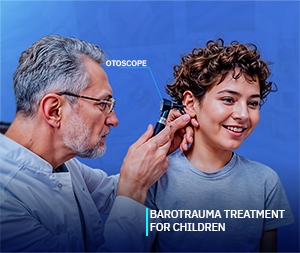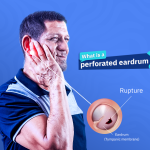Barotrauma
Barotrauma, also known as aerotitis media, barotitis media, or airplane ear, is a condition many individuals unexpectedly experience while flying, particularly during takeoff and landing. This occurs due to rapid changes in altitude that result in sudden variations in air pressure, which may exert force on the eardrum and surrounding middle ear tissues, leading to pain or a sensation of ear blockage.
In this article, we will explore the causes and symptoms of barotrauma, in addition to effective treatments that can help relieve its effects.
- Causes of Barotrauma
- Symptoms of Barotrauma
- Treatment of Barotrauma (Airplane Ear)
- Protruding Ears: Causes, Treatment Options, and the Most Effective Solutions
- Treating Barotrauma in Children
Causes of Barotrauma
Barotrauma occurs when there is an imbalance between the air pressure inside the middle ear and the external pressure surrounding it. This imbalance prevents the eardrum (tympanic membrane) from vibrating normally. The Eustachian tube—a narrow canal connecting the middle ear to the nasopharynx (the upper throat behind the nose)—regulates this pressure. During air travel, especially during ascent or descent, the Eustachian tube may fail to respond quickly to pressure changes, resulting in discomfort.
Barotrauma isn’t limited to air travel. Other situations that may trigger it include:
- Scuba diving with underwater breathing apparatus.
- Hyperbaric oxygen therapy sessions.
- Nearby explosions or blast injuries.
- High-speed elevator rides in tall buildings.
- Driving in mountainous terrain.
Symptoms of Barotrauma
Barotrauma can affect one or both ears and typically occurs following sudden atmospheric pressure changes. Symptoms can range from mild to severe and may include:
- Ear pain or discomfort, which is the most common symptom. The intensity of the pain varies based on the pressure differential.
- Ear blockage or fullness, a common sensation during takeoff and landing.
- Hearing loss, which can be temporary and mild to moderate in severity, with muffled sound perception.
- Tinnitus (ringing in the ears) due to middle ear pressure.
- Severe dizziness or vertigo.
- Nausea or vomiting in more intense cases.
- Ear bleeding, which may occur in severe or advanced cases.
Treatment of Barotrauma (Airplane Ear)
Several simple techniques can help alleviate the feeling of ear blockage caused by pressure changes, especially during flying or swimming:

Several simple techniques can help alleviate the feeling of ear blockage caused by pressure changes, especially during flying or swimming:
Yawning:
Repeated yawning can effectively equalize ear pressure by opening the Eustachian tube and allowing air to flow into the middle ear.
Chewing gum or sucking on candy:
These actions stimulate saliva production and promote swallowing, which opens the Eustachian tube and eases discomfort. It’s recommended to chew gum or suck on candy during ascent and descent.
Valsalva Maneuver:
A well-known technique for relieving ear pressure caused by pressure changes or wax buildup. Here’s how to perform it:
- Take a deep breath.
- Close your mouth and pinch your nostrils shut.
- Try exhaling gently while keeping your mouth and nose closed.
- A light popping sound usually indicates successful pressure equalization.
Toynbee Maneuver:
Another technique to relieve ear pressure by engaging throat muscles:
- Pinch your nostrils shut.
- Keep your mouth closed.
- Try swallowing (you may drink water if needed).
Warm compress:
A warm towel applied to the affected ear can help soften earwax and relieve pressure. Soak a clean towel in hot water, wring it out, and place it over the ear for 5–10 minutes.
Nasal decongestant spray:
If you have a cold, using a nasal spray about 30 minutes before your flight can reduce nasal congestion and improve pressure regulation in the ear.
Earplugs:
Affordable and risk-free, earplugs help regulate airflow to the ears and reduce the effects of sudden pressure changes.
Treating Barotrauma in Children
Children may experience painful ear blockage during flights. Since they cannot perform typical pressure relief methods, parents can help by:
- Breastfeeding or bottle-feeding: The swallowing action opens the Eustachian tube and reduces ear pressure. Feeding in an upright position is more effective.
- Hard candy or juice boxes with straws for older children to encourage swallowing.
- Gum chewing or drinking through a straw for children over 4 years.
- Pacifiers to stimulate frequent swallowing.
- Avoiding decongestants for young children unless prescribed, due to possible side effects.
Barotrauma is a common condition experienced in specific scenarios such as flying or diving. Fortunately, it can usually be managed easily with proper precautions. By following preventive strategies and ensuring ear health before travel, individuals can reduce the risk of barotrauma and enjoy a comfortable and safe journey during activities involving pressure changes.






